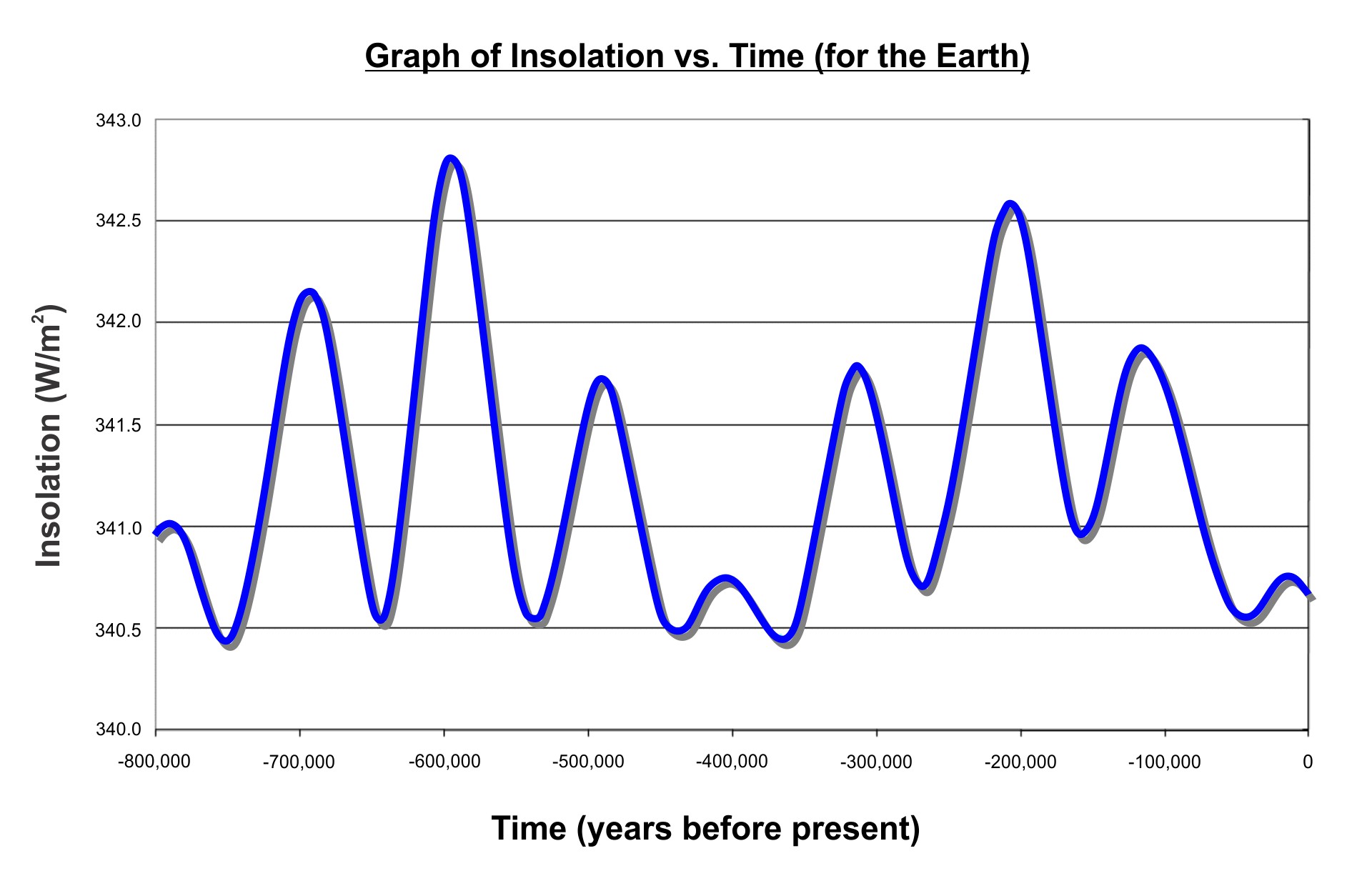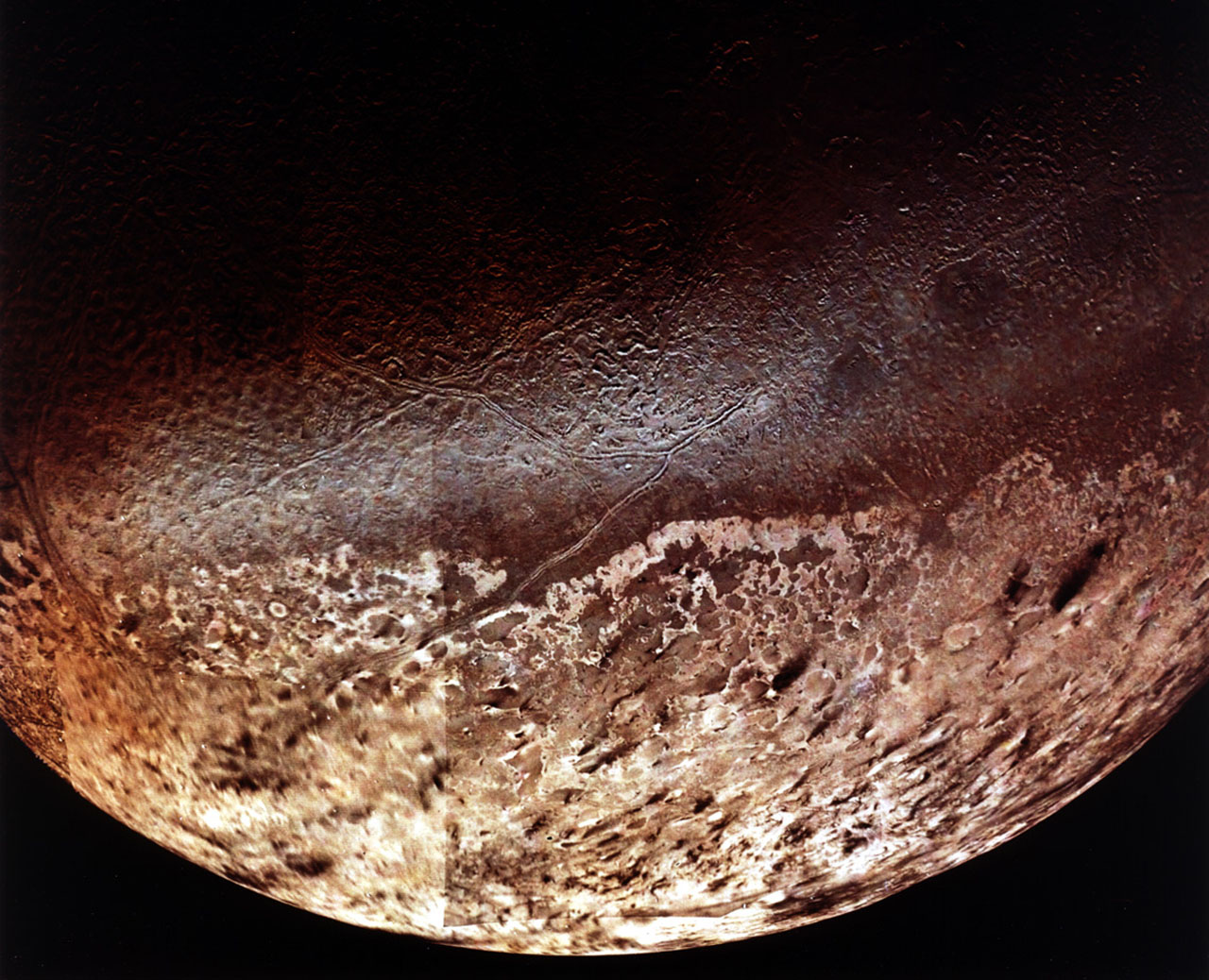Recent ice ages appear to have occurred approximately every 100,000 years. Periodicity in ice ages would seem to imply some kind of repetitive mechanism or mechanisms. Milankovitch proposed that changes in the shape of the Earth’s orbit and in the Earth’s axis of rotation were, in fact, just these mechanisms. Milankovitch specifically proposed that changes in three of the Earth’s orbital characteristics could produce enough changes in insolation to trigger an ice age.
One of these orbital characteristics is the shape of the Earth’s orbit. The shape of a body’s orbit is defined by the term eccentricity. An orbit that is completely circular has an eccentricity of 0. The eccentricity of an orbit increases as it becomes more and more elliptical; the eccentricity value gradually approaches 1. Eventually, a body will achieve an escape trajectory; the eccentricity at this point equals 1 or is greater than 1.
Changing the Shape of the Earth’s Orbit
Earth’s current orbit has an eccentricity of 0.017; a nearly circular orbit.
- Carefully examine the graph to the right that describes the eccentricity of the Earth’s orbit for 1 million years in the past and for 1 million years in the future.
- Is the shape of the Earth’s orbit stable over time? Explain. The peaks and valleys of the graph clearly illustrate that the Earth’s orbit changes over time from more elliptical to more circular, and then back again.
- Between what values does the Earth’s eccentricity vary? The Earth’s eccentricity varies between 0.058 and 0.005. (Note: Your values from your reading of the graph may be slightly different, but they should be fairly close to these values.)
- When will the Earth’s orbit achieve minimum eccentricity (i.e. almost a circular orbit)? The Earth’s orbit will have minimum eccentricity around the year 29,000.
- Does the Earth’s eccentricity seem to change in a regular fashion? There is clearly a periodicity to changes in the Earth’s eccentricity.
- Over what time period does the Earth’s eccentricity seem to fluctuate? Changes in the Earth’s eccentricity have a period of approximately 100,000 years.
- Is there something significant about this time period? Yes, this period of 100,000 years seems to match the period of recent ice ages.
The Earth’s eccentricity varies quite regularly over time from a nearly circular value of 0.005 to a mildly elliptical value of 0.058. The period of this change is approximately 100,000 years; a time period that seems to match fairly closely the cycle of recent ice ages.
- Would changes in the Earth’s eccentricity lead to changes in climate? Explain. Changes in eccentricity would definitely lead to changes in Earth’s climate. An increase in eccentricity would lead to great changes in insolation as the Earth travels in its orbit. The amount of radiation that the Earth would receive at its closest approach to the sun would be greatly in excess of the amount that the Earth would receive at it most distant point from the sun in its orbit. The energy distribution over the Earth’s orbit would be quite different from the comparatively smooth distribution in its current almost circular orbit.
- Carefully examine the graph to the right that shows changes in insolation for the last 800,000 years.
- Does the graph support your answer to question 7? Explain. Yes, the graph supports the answer to question 7. The graph clearly shows changes in the Earth’s insolation over the last 800,000 years. These insolation changes are in step with graph showing eccentricity changes over the last 1 million years.
Changes in the Earth’s eccentricity would be reflected in changes in the Earth’s climate. The Earth’s insolation would vary by quite a large degree if there were large changes in the Earth-sun distance as the Earth traveled in its orbit around the sun. A highly elliptical orbit would result in the Earth at its closest approach to sun receiving 20–30% more radiation than the Earth would receive at its most distant point in its orbit around the sun. Compare this with the current relatively circular orbit; there is only a 3% difference in solar energy received throughout the orbit.
Perfectly Circular—Almost!
Triton is Neptune’s largest moon. Its orbit around Neptune is quite unique; it has an eccentricity of 1.6 × 10–5. This is the smallest eccentricity of any known body in the solar system and gives Triton an almost perfectly circular orbit around Neptune.
Calculate the eccentricity of solar system objects. Go to Math Link…



